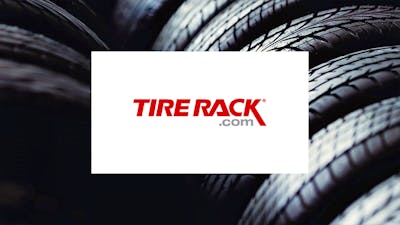Best Tires for the Nissan Titan
Deciding on the best tires for your heavy duty Nissan Titan can be a difficult choice. When Nissan built the Titan, they had tire priorities that included cost, durability, and safety, but what if you need a dedicated off-road tire, or one meant to handle snow? Whatever your needs, we hope our overview on the best tire options for the Nissan Titan truck can help you make a good choice.
Get the Best Deals on Tires
Best Tires for the Nissan Titan with 18-inch Wheels
- Kumho Crugen HT51 - Best budget tire
- Firestone Destination A/T2 - Best mid-priced tire
- Continental Terrain Contact A/T - Best superior tire
Best Tires for the Nissan Titan with Upgraded 18-inch Wheels
- Sumitomo Encounter AT - Best budget tire
- Pirelli Scorpion All Terrain Plus - Best mid-priced tire
- Bridgestone Dueler A/T Revo 3 - Best superior tire
Best Tires for the Nissan Titan with 20-inch Wheels
- Sumitomo Encounter HT - Best budget tire
- Cooper Discoverer AT3 4S - Best mid-priced tire
- Bridgestone Dueler A/T Revo 3 - Best superior tire
Original Equipment Titan Tires
What tires are on my Nissan Titan? The current generation Titan is sold in multiple trims with several tire sizes:
- The Titan comes with 18-inch wheels and tires size P265/70R18. The OE tire for this trim is the Toyo Open Country A26.
- The Titan is available with upgraded 18-inch wheels and tires size LT275/70R18 125. The OE tire for these models is the Goodyear Wrangler All-Terrain Adventure with Kevlar.
- The Titan is also available with 20-inch wheels and tires size P275/60R20. The OE tire for trucks equipped with these wheels is the Goodyear Wrangler SR-A.
Top Replacement Tire Brands for Nissan Titan
We’ve recommended three replacement tires in 16-, 17-, and 18-inch sizes, in budget, moderately priced and cost-no-object varieties. Whether your pockets are deeper than the Mariana trench or Ebenezer Scrooge considers you a role model, don’t worry; we’ve got you covered. All of these tires have ratings of four-stars or higher based on consumer surveys:
18-inch Tires for Nissan Titan
- Budget: Kumho Crugen HT51 - Kumho makes one of the best budget-oriented tires around. We frequently recommend the Crugen HT51 for its great treadwear ratings, great customer reviews, and solid fuel economy.
- Moderately Priced: Firestone Destination A/T2 - The Destination is one of Firestone’s top-rated tires and it has earned its stripes. It’s rated for severe snow service and has great customer reviews.
- Cost-No-Object: Continental Terrain Contact A/T - It’s not the most expensive tire you can buy for a Titan, but it’s one of the best.
Upgraded 18-inch Tires for Nissan Titan
- Budget: Sumitomo Encounter AT - In terms of budget tires for the Titan’s upgraded 18-inch wheels, there aren’t many that can do better than the Sumitomo. It’s rated for severe snow and has excellent reviews.
- Moderately Priced: Pirelli Scorpion All Terrain Plus - A severe snow rating and dozens of stellar reviews are enough for us to recommend the Pirelli. It’s also got a solid treadwear rating and a good load range for people that carry heavy loads.
- Cost-No-Object: Bridgestone Dueler A/T Revo 3 - Old-school white lettering and a great load range are just the start for the Dueler tires. It premises a long life and has many great reviews.
20-inch Tires for Nissan Titan
- Budget: Sumitomo Encounter HT - The Encounter HT is one of the best rated tires for the Titan, regardless of price. It promises to last for up to 60,000 miles and has nearly 200 positive reviews.
- Moderately Priced: Cooper Discoverer AT3 4S - If you use your Titan for off-roading or four-wheeling, the Cooper Discoverer will be your best friend. It’s rated for severe snow service, can last for up to 62,000 miles, and has near-perfect customer reviews.
- Cost-No-Object: Bridgestone Dueler A/T Revo 3 - We’re recommending the Dueler A/T Revo 3 again because of its hardcore off-road abilties and solid customer reviews. It’s worth noting that, while it’s got a good treadwear rating that suggests it’ll last for up to 54,000 miles, the tire isn’t as long lasting as some others on our list.
When Should You Replace Tires?
Tires either can meet their demise based on mileage or time.
Considering most drivers cover between 12,000 and 15,000 miles per year, the vast majority of Titan owners are going to be past the mileage that their original equipment tires were intended to cover before they’ll go past the tire’s usable age.
The life of your tire can be somewhat predicted by its UTQG (Uniform Tire Quality Grade) rating. Tire manufacturers apply their own grades to tires for treadwear, traction and temperature. When you’re researching tires online, a UTQG will come up next to the tire name in three digits and a number (ex. 500 A A).
You can glean a bit of info from the tires by reading this rating:
- 500 - The durability rating of a tire, compared to a control tire with a treadlife of 100. To obtain a grade, tires run on a 640 kilometer course for 11,520 km. Every 1,280 km, the tread depth is measured, to provide a projected tread life. The higher the number, the longer the predicted treadlife.
- A - This is the Traction rating of a tire, which indicates how well a tire stops in wet conditions. The highest letter grade is AA, followed by A, B and C.
- A - The second letter in the UTQG is the Temperature rating, which indicates how well a tire holds up to extreme heat. A is the highest, followed by B and C.
Original equipment Goodyear Wrangler SR-A tires on the Titan earn a solid 500 AA UTGQ rating. Unless they are damaged, these tires could last as long as 50,000 miles before you need to replace them.
HOWEVER: these mileage guidelines are just that -- guidelines. The real key here is treadwear. Modern tires have a treadwear indicator built right into the tread: The indicator is a bar that runs perpendicular to the tread. If the tread wears down to that bar, it’s time to replace them.
The other consideration is time. Each tire has a raised date code on the sidewall. The number begins with the letters “DOT” followed by 12 digits in three four-digit groups. The date code is the third group of four digits. To decipher the date of your tires, the first two digits represent the WEEK the tire was produced, and the second two digits represent the YEAR.
For example, if your tire’s date code is 3217, that indicates the tire was manufactured in the 37th week of 2017, or some time between September 11 and 17th that year.
Go out into any parking lot now that you know what that date code is, and you’ll be shocked to see people driving cars that they purchased specifically for their safety attributes, running around on tires that are 15 years old.
Once tires go beyond five years old, it’s time to consider replacing them. Tires are made up not just of rubber and steel or kevlar belts, but chemicals that help the tires resist UV rays, temperature changes and a lot of other environmental hazards. Those chemicals start to break down after five years or so, and the tires aren’t doing the job that they need to do.
Why Not Replace with Original Equipment Tires?
There’s no harm in replacing your tires with the shoes it came with from the factory. However, depending on what kind of driver you are, there are really good reasons to purchase something different.
When an auto manufacturer purchases tires, they buy them by the hundreds of thousands. For the manufacturer, the decision to choose a supplier one brand or another comes down to a price point. You don’t have to worry about that. You only buy one set of tires every five years. Life a little and buy something that’s going to improve the performance of your car.
If you could get a tire that stopped 20 feet shorter for an additional $10 per tire over the original equipment, you’d probably do it. Similarly, if there was a tire that made less road noise for a minimal investment over stock, you’d probably decide on the slightly more expensive tire (that is, unless you’re trying to drown out the conversation of your back-seat-driving spouse.)
Changing Nissan Titan Tire Sizes
Depending on the year and model, you may be shopping tires to fit anything between 18-inch for lower trim models to 20-inch wheels with various widths and sidewall sizes along the way. It is possible to change the wheel and tire sizes, but a general rule of thumb is to keep the total diameter of wheel and tire the same. So, that means that downsizing an 18-inch wheel to a 17-inch wheel would include a proportionate upsizing of the tire sidewall to compensate.
Downsizing wheels has its advantages. Benefits include:
- Better ride quality – More rubber means more cushion for poor road conditions.
- Cost reduction – Big tires are expensive, so moving to a smaller wheel size will mean less costly tire purchases.
- Seasonal changes – Winter and snow tires are available for a larger selection of smaller wheel sizes and the narrower footprint will provide better traction.
- Off-road – Many people choose to downsize wheels for off-road use to increase the vehicle’s shock absorption capabilities and bump traction on loose surfaces.
On the other side of the coin, going up in wheel size has its benefits:
- Better handling – Slimmer profile tires makes for less rubber to move around.
- Better looks – This one’s subjective, but many people feel that larger wheels look better than smaller wheels with more rubber.
- Better braking – Larger, wider wheels provide a bigger patch of rubber on the ground to slow the vehicle, reducing braking distance.
How to Read Tire Sizes
When reading tire sizes, it’s important to understand what the numbers mean. The Nissan Titan’s 20-inch wheels come with P275/60R20 114S all-season tires:
- 275 - indicates the width of the tire from one sidewall to the other in millimeters. This tire is 275 millimeters wide.
- 60 - indicates the aspect ratio, or sidewall height, as a percentage of the tire’s width. In this case, it’s 60 percent or of the tire’s width.
- R - means radial tires. Radials are the most common type of automotive tire and have fabric woven in at various angles with tread that is strengthened with additional layers of rubber.
- 20 - indicates the wheel diameter.
- 114 - the tire’s load rating.
- S - the tire’s speed rating. H-rated tires have a maximum top speed of 112 mph.
You may have noticed that the Nissan Titan’s three tire sizes have different diameters and also different aspect ratios. Generally, automakers choose tires that have the same outer diameter. This allows them to have only one speedometer setting.
Now that you know what comes on a new Titan and how to read the size numbers, let’s look at the different types of tires available to you. Depending on the type of driving you’re doing, where you live, and the weather, you have a variety of choices for tire types:
- Touring and All-season tires - provide a smooth ride, good wet and dry traction, decent winter traction, and longer tread life. These tires are acceptable for winter use but can’t be expected to provide the traction and stopping power that a dedicated winter tire can
- Performance tires - are focused on providing confident handling, better wet and dry traction, and a sporty feel. Their higher grip and speed ratings come with a tradeoff of shortened tread life and reduced ride quality
- All-terrain tires - are built to maximize off-road traction and provide good durability overall. Their construction means more noise and less comfort on the road, but winter traction and tread wear is acceptable
- Winter and snow tires - are made with special rubber compounds that maintain grip and pliability when temperatures drop. They are also built with special tread patterns to maximize the vehicle’s ability to start and stop on very slippery roads
Tire Sizes By Year
| Year | Trim | Size |
|---|
Shop Tires Online and Save
Online tire prices are usually less than in store

Nissan Titan Tire FAQ
- What brand of tires does Nissan use for the Titan?
Depending on the trim, it could be either a tire from Toyo or Goodyear, but there’s no reason to stick with those tires when there are better performing tires on the market.
- What tire sizes will fit my Nissan Titan?
The biggest question most people ask is “What’s the largest tire I can fit on stock wheels with no lift?” That, of course, depends on what wheels came on your truck. For instance, a Titan XD comes with a 20-inch wheel. Some consumers report being able to put a 275/65R20 tire on that wheel with no rubbing.
- What is the best Nissan Titan tire pressure?
Check inside your driver’s side door for a white and yellow label that will tell you the exact tire pressure recommendations for your Titan model. That tire pressure can also change depending on the load of passengers you’re carrying, as well as the cargo load. Note that the pressure on the tire itself is never the correct setting, but rather a maximum.
- How often should I rotate my Titan’s tires?
Rotating tires is more about the tire than it is about the car. A typical rotation interval is somewhere between 5,000 and 7,000 miles, though specific cars and tires may change those numbers a bit. The Titan is either a rear-wheel or four-wheel drive-based car, so the rear tires will be worn more quickly than the fronts. Do not blow off this service.
- What is the best Titan tire change kit?
Your Nissan Titan should have come equipped with a compact spare tire and changing tools in the trunk. In this case, you already have everything you need to physically change the tire, but you may want to carry an extra roadside emergency kit with an upgraded lug wrench, jumper cables, and emergency markers just in case.













